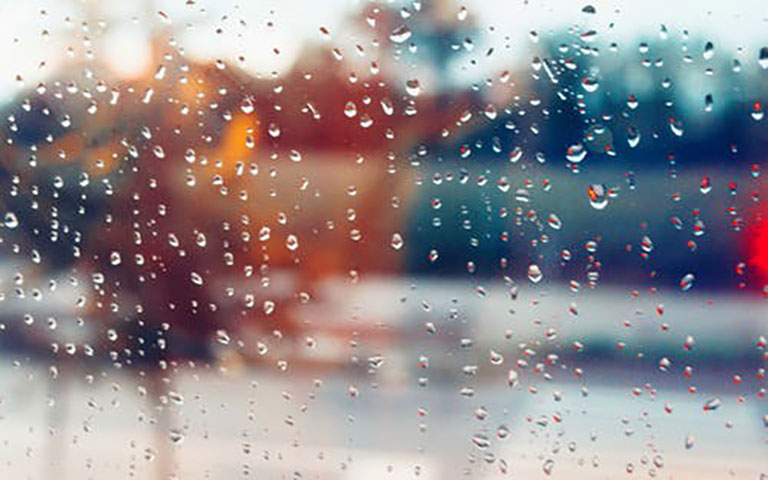How to Measure Humidity

Humidity is the amount of water vapor (or moisture) in the air. There are various ways to measure and state the level of humidity. The two common ways to measure humidity are Absolute Humidity and Relative Humidity. In this article, we look at these common ways of measuring humidity, understand the difference between them, and see their relevance to our daily lives.
Let’s start with Absolute Humidity. As the name suggests, this is simply a measure of the amount of water contained by a unit of dry air. As air is a mixture of gases, the unit of air is expressed as volume. The Absolute Humidity is then expressed as the mass of water contained by the unit volume of air, i.e. grams of moisture per cubic meter of air. The Absolute Humidity in the air can range anywhere from 0 to 30 grams per cubic meter.
Because the characteristics of air change according to the temperature and pressure, the limits of moisture it can contain also changes accordingly. Cool air can contain lesser maximum moisture than warm air. As the moisture reaches the maximum level, it turns into water. This, by the way, is also how rain starts in the clouds. As the temperature of air increases, the amount of moisture needed to form water increases. This is also partially the reason why the chances of rain are greater in colder weather, even with the same amount of cloud cover.
The next common measure of humidity is the Relative humidity. Commonly, when reading the weather reports, the humidity levels stated are actually Relative Humidity. As opposed to Absolute Humidity, Relative Humidity is a percentage measure. It is the comparison of Absolute Humidity at a particular temperature to the highest possible Absolute Humidity at that temperature. This makes it easier to compare humidity levels and avoids the necessity to remember the maximum possible humidity level at different temperatures.
The Relative Humidity is a commonly used measure. Even the recommended humidity levels of 30% to 50% are actually recommended Relative Humidity levels. Some electronics come with a range of humidity levels they can operate in. This is also a range of Relative Humidity. The effect of humidity on a property is also better correlated to Relative Humidity. It is when either the moisture in the air starts turning to water, starts to condensate on the cold surfaces or wet surfaces cannot get dry, that property starts to get damaged by the humidity. All these issues relate to the air reaching its maximum capacity of containing moisture.
The effect of humidity on the perception of temperature is also better correlated with the Relative Humidity. When the Relative Humidity is at or close to 100%, the sweat from our bodies cannot evaporate. This makes it difficult for the body to lose heat. As a result, our bodies produce more sweat and we feel increasing levels of heat and discomfort. The temperature feels more than it actually is. Contrary to that, when the Relative Humidity is close to 0%, then the sweat evaporates very quickly and the body starts losing heat more than it wants to. This makes the temperature feel less than actual. This variance in perceived temperatures can easily be up to 10 degrees Fahrenheit from the actual temperature. Interestingly, High Relative humidity can decrease the chill felt during cold weather and low Relative Humidity can decrease the perception of heat during hot weather.
As stated earlier, a Relative Humidity from 30% to 50% works well for people as well as property. At this level of Relative Humidity, we don’t feel unnecessary or additional discomfort. Of course, a very high or low temperature within the recommended Relative humidity range will still be uncomfortable. In areas with drier than usual climates, people tend to use humidifiers to maintain appropriate levels of Relative Humidity. On the other hand, in areas with wet climates, people tend to use dehumidifiers to maintain a healthy level of Relative Humidity.
We hope you liked this introduction to humidity and how it is measured. We presented an easy to understand definition of Absolute and Relative Humidity and how they are related to each other. We summarised how Relative Humidity is a more relevant measure and why it is important for our everyday lives.




